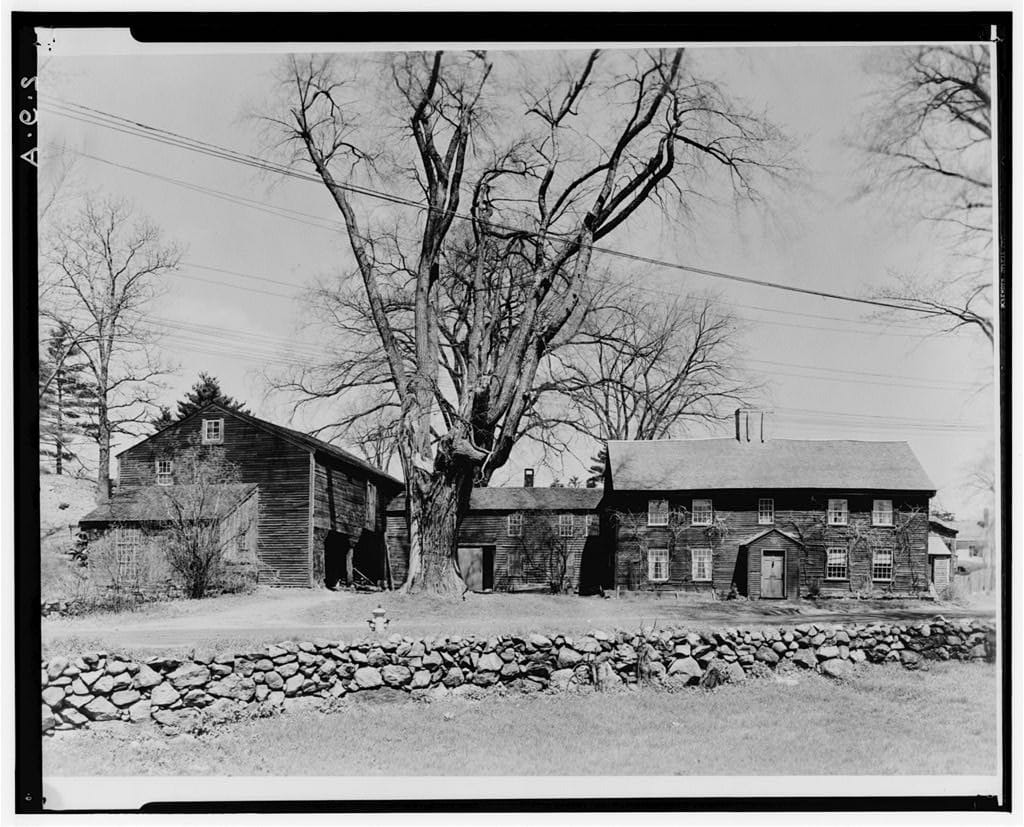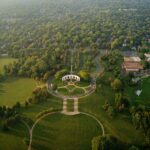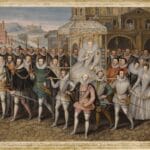The Dark Legacy of Benjamin Abbott in North Andover
Step into the chilling world of 17th-century New England, a time when whispers of witchcraft echoed through the streets. In the small town of North Andover, the story of Benjamin Abbot unveils a dark chapter, forever linked to the infamous Salem Witch Trials.
Imagine a community gripped by fear, where suspicion festered like a wound. In this climate of paranoia, Benjamin Abbot, a prominent figure in North Andover, leveled accusations that would have devastating consequences.
At the heart of the matter was a land dispute between Abbot and Martha Carrier. Abbot claimed that Carrier had cursed him, causing his foot to swell and his livestock to perish. His wife, Sarah, added fuel to the fire, alleging that Carrier’s witchcraft had bewitched their cattle. These claims, perhaps fueled by the land dispute and the contagious fear of witchcraft, spread like wildfire through the community. The accusations against Carrier gained momentum when Abbot’s cousin, Phebe Chandler, joined the chorus of accusers.
Despite Carrier’s desperate pleas of innocence, the court, heavily influenced by the testimonies of Abbot and his family, found her guilty of witchcraft. In 1692, she was hanged, another victim of the witch hunt hysteria that had gripped the region.
Even today, the legacy of Benjamin Abbot casts a long shadow over North Andover. His house, a tangible link to that turbulent era, still stands as a stark reminder of the devastating consequences of unchecked accusations and mass hysteria.
While the Salem Witch Trials often overshadow other events of the time, Andover’s own experience with the witch hunt is a stark reminder that fear and suspicion can poison even the smallest communities. The trials left an indelible mark on Andover, forever etching this period into its history.
The story of Benjamin Abbot and Martha Carrier serves as a cautionary tale, reminding us that even in the face of fear and uncertainty, it’s crucial to uphold justice, due process, and the presumption of innocence. It’s a chilling reminder of the fragility of reason when fear takes hold.
Unveiling Ben Abbott: An In-Depth SEO Analysis
The name “Ben Abbott” presents a unique challenge. While intrinsically linked to the dark history of the Salem Witch Trials, it also leads to a 21st-century bladesmith of the same name. This creates an intriguing SEO opportunity to delve into two seemingly disparate individuals separated by centuries.
Recommended Titles:
- Ben Abbott: From Salem Accuser to Forged in Fire Champion – The Untold Story (This title combines both historical and modern aspects of potential Ben Abbotts)
- Who is Ben Abbott? Unmasking the Man Behind the Name (This title uses a question format to pique reader interest and hints at multiple identities)
- The Two Ben Abbotts: Witchcraft History and Bladesmithing Prowess (This title directly addresses the potential for two different Ben Abbotts and their respective claims to fame)
Powerful Key Lines:
- Two Ben Abbotts, Two Centuries Apart: One, a 17th-century Andover resident entangled in the Salem Witch Trials, the other, a 21st-century bladesmith and two-time “Forged in Fire” champion.
- Benjamin Abbot House: A Legacy Tainted by Witchcraft Accusations: Standing as Andover’s second-oldest structure, the home built in 1711 bears the name of a man whose testimony condemned Martha Carrier as a witch.
- Ben Abbott’s Bladesmithing Triumph: Rising to prominence through the History Channel’s “Forged in Fire,” Ben Abbott captivated audiences with his craftsmanship, ultimately securing two championship titles.
- Separating Fact from Fiction: Unraveling the Identities of the Two Ben Abbotts: Historical records and modern media converge, demanding a closer look at the lives and legacies associated with the name “Ben Abbott.”
Was There More Than One Benjamin Abbott?
This already complex historical narrative takes another turn when we examine the existing evidence. While many believe Benjamin Abbot, the accuser of Martha Carrier, resided in what is now known as the Benjamin Abbot House, dendrochronology testing suggests otherwise. The testing reveals that the house was likely constructed in the early 18th century, well after Abbot’s death in 1703.
This discovery raises several questions:
- If Benjamin Abbot did not live in the house that bears his name, what was his connection to it?
- Could there have been another Benjamin Abbot, perhaps a descendant, who later resided in the home, thus leading to the historical confusion?
These questions invite further exploration into property records, genealogical data, and local historical accounts to unravel the mystery of Benjamin Abbot and his true link to the house in Andover.
To learn more about the influential figure in the Harlem Renaissance, click on sylvester watkins halrem renaissance. If you’re interested in comparing two beautiful Maine beaches, check out george popham beach vs popham beach maine. And for aspiring artists, you won’t want to miss the exceptional da vinci art school flushing ny.
- SYBAU See You Baby Meaning: Gen Z Slang Evolves - July 1, 2025
- Unlock Your Inner Youth: Lifestyle Secrets for a Vibrant Life - July 1, 2025
- Decode SYBAU Meaning: Gen Z Slang Explained - July 1, 2025






